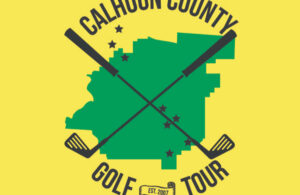The front nine
- Updated: September 14, 2023
Nine of the most significant events that have shaped the lore and legacy of the Sunny King Charity Classic
By Al Muskewitz
For East Alabama Sports Today
When the player who has won more Sunny King Charity Classic titles than anyone on the planet tells you the most memorable moment in the history of the tournament is the weekend Jacob LeCroy and Jacob Harper had back in 2019, you can take it to the bank that it’s a pretty big deal.
There have been a lot significant moments over the past 44 years to shape the lore and legacy of the largest charity tournament in the southeast, and attempting to categorize them all would take more space than the internet allows.
We’ve designated what we consider the top nine – a front 9, if you will – most significant events in tournament history, both on and off the course.
Usually, these types of lists are reserved for milestone anniversaries of an event. The Sunny King’s 50th is coming up in a few years. Consider this a head start.

Record-breaking weekend
It starts with the 51-under-par score LeCroy and Harper won with four years ago, when the tournament and the world was a lot different. It was a weekend Gary Wigington, the winningest player in tournament history, co-chairman Brett Key and a tee sheet full of others believe won’t be duplicated.
The team, a player just out of his senior year in high school (LeCroy) and an aspiring PGA Tour pro (Harper), put on a dazzling display of length, shot-making and putting to set or tie tournament records each of the three days. They failed to birdie or eagle only eight of the 54 holes they played and never even looked at bogey. They won by 13 shots – another record.
It started with a 20-under 52 in the scramble at Silver Lakes where “everything went right” and peaked during Sunday’s 15-under, best-ball round, the most demanding of the formats. They only need a 7-under to tie the old record the last day and had that after 10 holes. Harper shot 59 on his own ball with a 28 on the front. LeCroy shot 62 and was 6-under over the first five holes on the back.
It could’ve gone deeper, because LeCroy lipped out for eagle on 17, and Harper missed a five-footer for birdie on 18.
“It wasn’t like they beat the record by a shot or two, that somebody else may beat it in a year or two,” Wigington said. “It was just such a great score and such a runaway. You’ve got to count it as the best thing that’s happened, as far as playing, anyway.”
Even to this day LeCroy has a hard time believing what they did.
“I hadn’t played a bunch with Harper leading up to it, and we just came up with the idea, and it happened, and we went out there and did something unbelievable,” he said. “The first round was just stupid; we were making putts from everywhere. Everything went right. I didn’t play great at Cider, and Harper played his best. That was the difference. That’s what sent it over the top.
“Could we match it now? No, and I promise you both of us are better players now. Looking back on it, we couldn’t do it again, if you want the truth. We’d go out there and give it our best go, and if we were both playing good, I think we could get to 45-(under), 48-, 50-max, but what we did was a little dumb. We were absolutely golfing our ball and converting all of our opportunities.”
Go forth into the good night
Lights, camera, action. The tournament returned from a year off due to COVID and with a new fall date and rewarded patrons with the longest playoff in the history of the Classic. It had a feel of Hollywood to it. Call it Bagger Vance Comes to Anniston.
Ott Chandler and son Dalton outdueled Ty Cole and Gary Wigington over a six-hole playoff on No. 16 at Anniston Country Club that extended well into the evening, prompting cars to turn on their headlights around the green and the players to use their phone flashlights to see on the tee.
Ott made a clutch putt on the 18th green to force the playoff, and off they went. Six times up and down the hill on the iconic par-3. The crowd loved it. It was as raucous as the Party Hole at TPC Scottdale.
“The greatest Sunny King ever,” someone who presumably watched LeCroy and Harper two years before yelled from the gallery.
It finally ended a short time later with Dalton sinking a 15-foot birdie putt from below the hole.
“One for the ages, man,” Ott said when it was over. “What a day, what a tournament to play with your son and be in that kind of finish with him being under the gun two and three times to make a putt for us in overtime … By far – by far – my most exciting golf tournament I ever played in.”
“You try to forget the losses, but that was a tough one to forget,” Wigington said. “That’s something you’ll always remember and everybody who was there will remember it.”

Let’s do it again
(just not quite as long)
Just when you thought the tournament couldn’t come close to matching the drama of the year before, it had at it again. This one wasn’t quite as long or finished in as much darkness, but it had just as many thrills.
Ty Cole and Gary Wigington got the one that got away the year before, beating Layton Bussey and his former Jax State teammate, PGA Latin American Tour winner Jesus Montenegro, on the fourth hole of sudden death.
Just like the year before when Ott Chandler made a clutch putt on 18 to force a playoff, Cole hit one of the best recovery shots in Sunny King history over the trees on 18 to four feet and sank his birdie to tie for the lead. It went to a playoff after Montenegro missed two 15-foot birdie putts that would’ve won it in regulation.
The playoff again was staged at 16. It nearly ended before it began, with Bussey coming within a roll of a hole-in-one. Just as it seemed the young guns had it won, Wigington drained a 10-footer for birdie to keep the playoff going. Cole made a four-footer on the fourth playoff hole to end it.
(Ironically, the two teams reprised their playoff battle in a one-hole playoff for the Buddy Moore Charity Tournament title Sunday).
“That one was a great win,” Wigington said. “It was a very tough win. That one could have gone the other way as easily as it went our way.”

King of the King
No one in the history of the Classic has had more success than Gary Wigington. The former college All-American who has won everything you could win in Calhoun County in a Hall of Fame-worthy career has hoisted the Sunny King winner’s trophy nine times – five times with Randy Reaves (2000-02, 2007, 2012) and four with current partner Ty Cole (2016-18, 2022).
The closest is six — Reaves and Ott Chandler.
Wigington also has finished second five other times (2005, 2010, 2013, 2014, 2021), three in playoffs. He’s never finished worse than 10th overall since 2007 and, since 2010, no worse than fourth.
Timing, skill and battle-tested experience, along with great partners, is the winning formula. And the bad news for the field is the 50-something is back to hitting it “probably the best I have for the year” after a recent bout with COVID.
“For some reason, right around that tournament is usually when I start playing better, mid- to late-summer,” he said. “If it was held at the beginning of the summer, I probably wouldn’t have as many wins. For whatever reason, it’s late summer before I start playing my better golf for the year, and that just happens to fall at that time.”
He goes for one for his second thumb when this year’s tournament gets underway Friday. You might say he already has 10, having won the Championship B flight in 2009.
“Thinking back on it, it makes you feel good because you have won nine and you definitely want to try to get 10 – that’s a big number – and to get to 10 would be great,” he said. “Every year the tournament comes around, you get excited about it and look forward to it, and you don’t think about it until it comes around again.
“I’ll see those (commemorative poker) chips laying there in my office, and it makes you feel good that you’ve been fortunate enough to have won that many and some of the fashions we’ve won them too.”
It’s all natural
For years, the tournament was a net event, with players using their handicap to turn bogeys into pars, natural birdies into eagles and put red numbers all over the scoreboard.
Of course, some suspect scores prompted questions of just how legit those declared handicaps were, and in 1989, after years of winning net scores anywhere from 25- to 41-under-par, the committee decided going forward handicap strokes could only take a players’ hole score to par. It didn’t eliminate all the claims of sandbagging, which officials addressed by eliminating pre-flighting, but what it did was turn the event into a birdie-making contest.
For the next 13 years, together with a change in playing formats, a winning score in the 20s was the norm and 30 seemed the impossible dream. Stronger fields and technology turned the 30s into the standard and made getting to 40 the challenge.
That’s what made the Jacobs’ winning score even more impressive. They were delivering natural birdies and eagles.
“That eliminated as much of the squirrelly stuff as you can,” co-chairman Brett Key said. “I think it made it much more competitive, moreso in the lower flights than the upper ones, but I think it made the tournament as a whole more competitive from the first flight to the last flight.”
The great expansion
In its formative years, the Sam Byrd Invitational was a one-day best-ball net event with a gross component at Anniston Country Club and it has been growing ever since.
It expanded to a two-day ACC event in 1981 and stayed that way until bringing a second course, Indian Oaks, into the fold in 1985. It went to three days, three courses in 1987 – the first year it carried the Sunny King name – with the addition of Fort McClellan’s Cane Creek GC, but remained a best-ball handicap event for two more years. Pine Hill later replaced Indian Oaks in the rotation.
Silver Lakes became a permanent piece of the rotation in 1995, and Cider Ridge became the third component in 2004, giving the tournament placement on the three best golf courses in the county.
The three-course set up allowed the tournament to expand its field to accommodate more than 200 teams, which in turn helped increase the size of the big check it presents to the charities.
“The tradition of the Sunny King Charity Classic is unmatched in this region,” tournament co-chairman Jacki Lowry said. “When the Classic first brought in over $100,000 in proceeds to donate to area non-profits, it became a charitable event that is irreplaceable in our community. The heart behind the tournament is coming together to make a difference in the lives of those in our communities who need it.”
A championship format
Just as it has grown in reach, the Classic, in an ongoing effort to bring something new to the fold every year, has grown with its formats.
The tournament started as a one-day, best-ball net event out of the gate and has played to a various combination of formats over the years. In 2005 it settled into its current playing format – scramble at Silver Lakes, modified scramble at Cider Ridge and best ball at Anniston Country Club.
The best players in the field begin their rotation in the scramble at Silver Lakes to avoid any confusion on the leaderboard and wrap it up with the demanding best-ball at ACC in the fervor of Championship Sunday.
We’re closed now
The hardest decision the tournament committee has had to make in the history of the event was the one in 2020 that postponed the event due to the COVID-19 pandemic. Not just for a round, but for the entire weekend.
Entries were coming in, courses were locked up and sponsors had been secured, but the call was made to postpone out of an abundance of caution for all concerned.
“It was awful,” co-chairman Brett Key said. “In the short amount of time I’ve been involved in it, that was the most difficult decision the Sunny King Charity Classic golf committee has ever had to make. It was back and forth for months. At that point, with everything else that was going, we really had no other option.
“It was horrible. It was a horrible decision to have to make, a horrible decision to have to communicate to those charities. I hope and pray something like that never happens again.”
But out of that decision came one of the tournament’s greatest victories – the decision to move the event from the July heat to September. The decision, while it has created some logistical challenges, has been extremely popular with the masses. The field has sold out in record time each of the last two years.
Where it began
You couldn’t have a Sunny King Charity Classic if somebody didn’t get it started. All they wanted to do in the beginning was have a golf tournament to raise money to pay for the city’s Christmas lights. From those humble beginnings, the event has grown into the largest charity golf tournament in the southeast, drawing regularly 200 teams every year and raising close to $3 million for its local charities.
“When you think about it, that’s the foundation of what we’re able to do today,” co-chairman Brett Key said. “Those guys, I’m sure, at that point had no idea what this would turn into, but without the idea that they had on Day One for a one-day charity tournament, we wouldn’t be sitting where we are today with a 416-man field and a three-day tournament. For them to do what they did in the time period they were doing it was a fantastic idea.”
The tournament was rolling for eight years as the Sam Byrd Invitational, named in honor of the former Anniston CC pro who in a past major-league baseball life was known as Babe Ruth’s Legs, but the time came for it to grow. To that end, it took a major turn in 1987, when organizers approached local car dealer Sunny King soliciting his support with the promise of naming rights to the event. King, a golfer himself, backed the venture, and that support continued after his passing through the efforts of his wife Patty.
“While those founders are very important, one person who doesn’t get the recognition I think they should is Patty,” Key said. “The way Patty King has continued to support this at whatever level needs to be done, even after Sunny passed, is amazing, and it wouldn’t be where it is today without her.
“When think about these things from a transition from Sunny, who was a golfer and enjoyed it, to somebody like Patty, who’s not a golfer, you very easily could have lost your title sponsor, but Patty has stuck through and seen this thing through to whatever level we needed her to do it.
“So, I think it’s a combination of those founders and the fantastic idea that they had and the vision of the people before me – the Franz Cobbs, the (Jason) Aldermans, Hank Smith – and to have somebody backing you on whatever crazy idea we come up with is how we got to where we are today.”
Al Muskewitz is the former editor of East Alabama Sports Today. He thought retirement would provide more time for golf, but in reality has discovered the opposite is true.











You must be logged in to post a comment Login